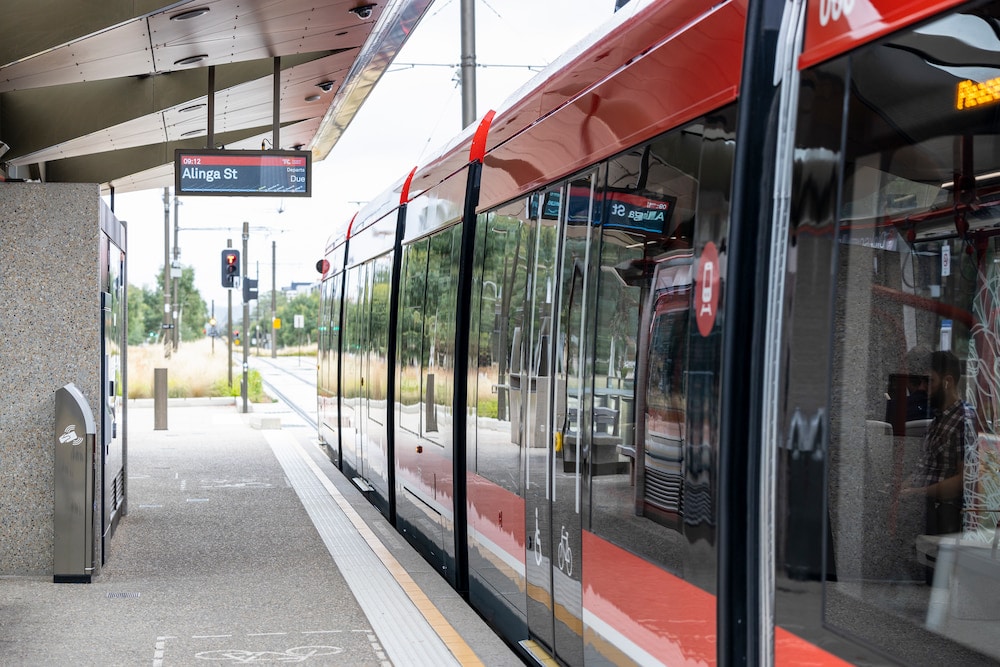Canberra’s roads have grown more congested, and public transport use has declined since the pandemic began. The ACT Government is determined to wean Canberrans off the motorcar and onto buses and rail.
“Traffic volumes in Canberra have now exceeded pre-pandemic levels because people have not yet returned to public transport,” said Chris Steel, Minister for Transport and City Services.
The ACT Transport Recovery Plan, launched last week, sets out a policy to return public transport patronage to pre-pandemic levels by the end of the year and keep it growing – essential, the government believes, for cutting Canberra’s greenhouse emissions and keeping the city moving. But the government’s emphasis on more flexible working arrangements has been criticized by the Opposition.
Transport accounts for more than 60% of Canberra’s harmful carbon emissions, according to the Plan, making it essential to reduce the number of private car trips. As Canberra grows, encouraging more people to choose public transport will prevent traffic gridlocks.
Fewer people, however, are using public transport than before March 2020. Although numbers have recovered from their nadir last year, the government must still persuade reluctant or recalcitrant Canberrans that public transport is safe.
Public transport use fell by 87% from almost 70,000 in March 2020 to 10,000 a month later. Last month’s patronage of approximately 52,000 was only 75% of pre-COVID levels, and one in six public transport users have not been back on board since last year.
At the same time, the Plan states, road congestion is worse; 8% higher in Woden, for instance.
Flexible work arrangements could be one solution to ease traffic, spreading out peak demands on the roads during morning and afternoon commutes, Mr Steel believes.
“We want to avoid Canberrans sitting in their cars for 40 minutes to an hour when they could have a shorter, more convenient commute by travelling a little earlier or later on public transport or by private vehicle.”
The government intends to work with major employers – including the ACT and Commonwealth public sectors, and businesses along the light rail route – to encourage more people to work flexibly, outside the standard 9am to 5pm hours. The Plan states that more Canberrans are already working from home or in adapted, flexible modes, according to anecdotal evidence. (The government does not have figures across the entire local workforce.)
“The past year has shown that employees can be very productive without working a strict 9-to-5 day, so we are optimistic that employers will embrace practices that help spread the peak,” Mr Steel said.
Liberal MLA Mark Parton, Shadow Minister for Transport, dismissed the notion as “ludicrous”.
“The public transport system is there to support the city, support the community, and support workplaces and businesses; not the other way around,” he said. “Workplaces aren’t there to prop up the public transport system, and it’s ridiculous to believe that could ever be the case.”
Mr Steel responded that flexible working arrangements were not compulsory.
“No business will be required to make these changes, but they are one way that employers can help their employees have an easier commute, during a time when road congestion is higher due to COVID-19 [and city roads will be dug up for stage 2A of light rail].”
Mr Parton also suggested that cafes and restaurants in Civic and other town centres could lose trade.
“If everyone changes their work times, this will place unnecessary pressure on already struggling small businesses.”
Mr Steel stated that changed working arrangements would not affect businesses.
“Spreading out the peak won’t reduce the overall number of people coming into the city and accessing local businesses. It will just mean demand for transport and other services is distributed over a slightly longer period each day.”
The Transport Recovery Plan also states that the government will increase services through network upgrades (including on weekends and off-peak times) and prioritise buses by creating more bus lanes.
Unlike the rest of the world, the ACT Government expanded its public transport network during the pandemic; it introduced 692 more weekday bus services, and more frequent light rail services to prevent crowding at peak times.
The government will also eliminate cash fares completely, having temporarily phased them out last year and replaced them with contactless payment or tap-and-go models. To protect patrons, vehicles and infrastructure are regularly cleaned, and COVID-safe behaviour is promoted.
“Together with Canberra’s broader success in stamping out COVID, these actions have helped people feel safe on public transport, and meant our services are more accessible than ever,” Mr Steel said.
For more news:



